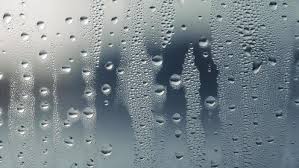
Natural Wool Insulation: Moisture and Mold Control
Excess Moisture and Mold are among the main causes of health problems and discomfort in the built environment. Buildings experience moisture buildup from human breath, perspiration, plants, cooking, and washing.
Natural Wool Insulation: Moisture and Mold Control
Excess Moisture and Mold are among the main causes of health problems and discomfort in the built environment. Buildings experience moisture buildup from human breath, perspiration, plants, cooking, and washing. This condensation accumulation promotes mold and mildew growth, which are detrimental to health. Additionally, excess humidity can promote dust mites. Wool has the natural ability to regulate the humidity of a room by absorbing moisture when the atmosphere is damp and releasing it when the atmosphere is dry. Wool can absorb nearly 40% of its own weight in water and still feel dry to the touch.
PURE WOOL INSULATION by Wool.Life manages humidity in the atmosphere like no other insulation fiber. At about 65% Relative Humidity (RH) Natural Wool Insulation will absorb moisture into it complex fiber structure. Once the RH drops below 65% it releases the moisture back into the atmosphere. This keeps a more constant humidity level in the room as well as helping to regulate the temperature. Managed moisture levels have a direct effect on the ability for mold to grow. Mold is a major contributor to allergies and bronchial problems.
Wool is an efficient moisture buffer in buildings, and because wool can “breathe,” it is ideal for clients in humid or damp climates. Because the insulating properties of wool are stable across a wide range of moisture levels, this provides more consistent performance in buildings.
Mold and Your Home
Mold spores are found both indoors and outdoors. Mold can enter your home through open doorways, windows, vents, and heating/air conditioning systems. Mold in the air outside can also attach itself to clothing, shoes, bags, or pets, and can and be carried indoors.
Mold will grow in places with a lot of moisture, such as around leaks in roofs, windows, or pipes, or where there has been flooding. Mold grows well on paper products, cardboard, ceiling tiles, drywall and wood products. Mold can also grow in dust, paints, wallpaper, conventional insulation, carpet, fabric, and upholstery.
In a word, wool helps to control mold Inside your home by controlling humidity levels and managing moisture.
IWTO wool sheep welfare guidelines_2014_1 CONTROL-OF-INDOOR -AIR-POLLUTION FlameResistance_CMSE_PDF Standard